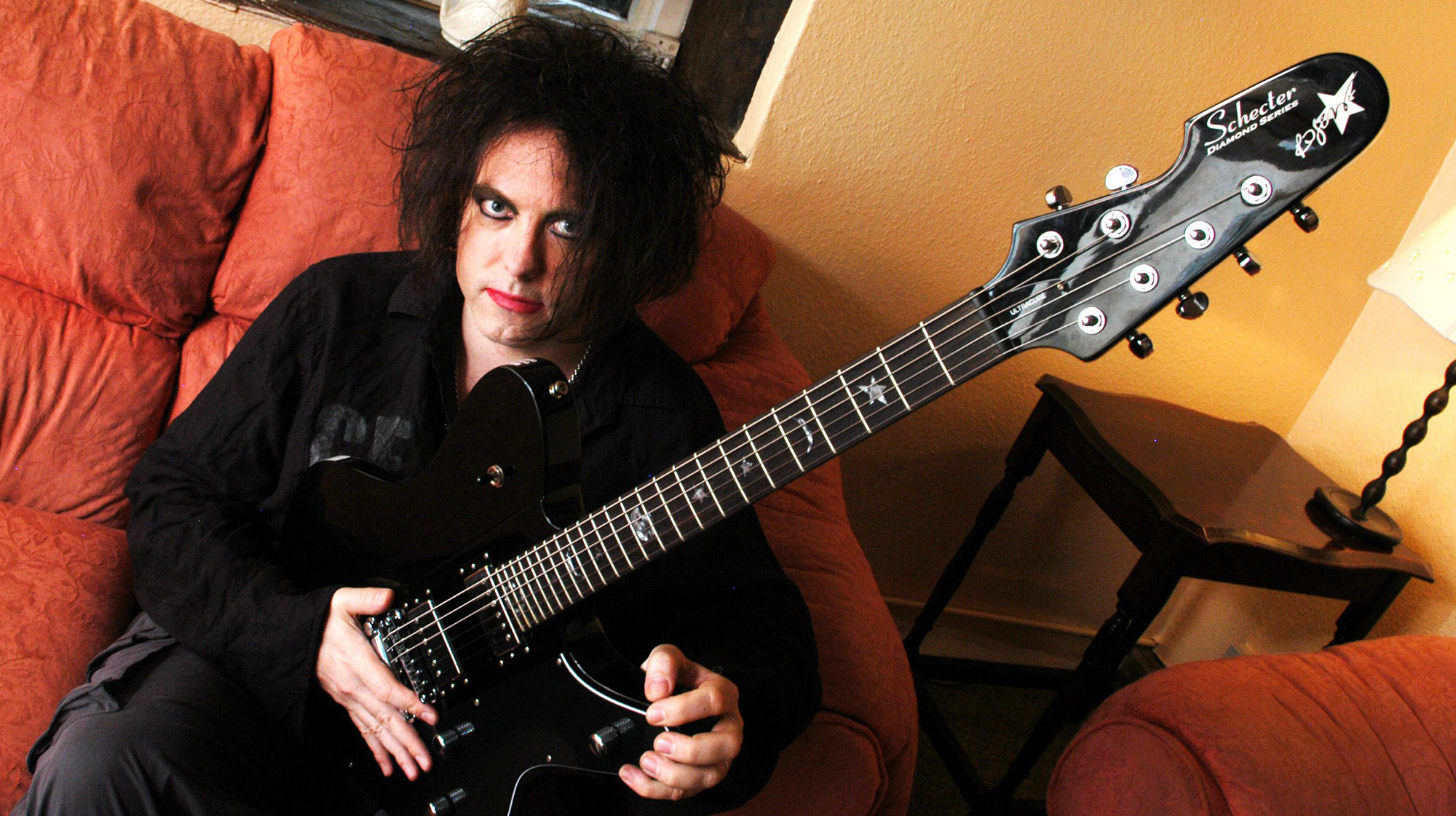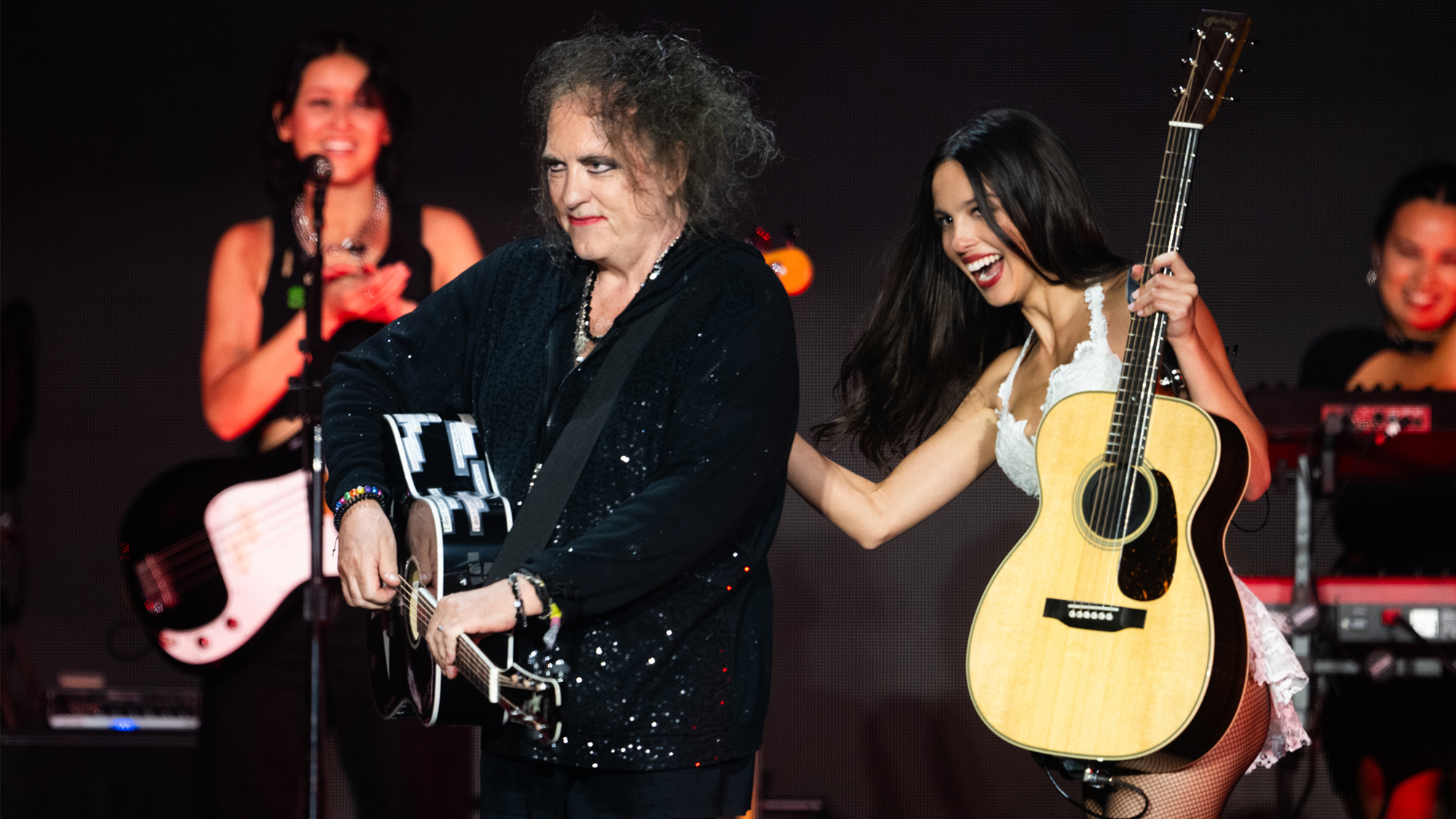“It should have been a hit. Robert was disappointed and he had a right to be.” It failed to chart when it came out in 1979. So why is Robert Smith and the Cure’s timeless pop song suddenly surging up listeners’ playlists today?
Smith — who got a boost at Olivia Rodrigo’s Glastonbury show this past summer — says the tune’s rebellious message is as valid now as it was when he wrote it

More than 45 years after its release, a seminal new wave track is suddenly rising up the charts.
The Cure’s 1979 single “Boys Don’t Cry” has become one of TikTok’s most-streamed songs. As of this writing, it’s at the number 45 position.
It’s quite an achievement for a recording that was virtually ignored in its home country when it came out. The Cure were early in their career when the song was recorded and released. “Boys Don’t Cry” was a far cry from the English group’s first album, Three Imaginary Boys. That dark and angst-ridden affair had been heavily directed by the group’s producer, much to the dismay of its frontman, guitarist and singer, Robert Smith.
“I had dreamed of making an album, and suddenly, we were making it, and my input was being disregarded,” Smith told Rolling Stone. “I decided from that day on, we would always pay for ourselves and therefore retain total control.”
In that sense, “Boys Don’t Cry” was Smith’s cry of independence, a song that picked and poked at societal norms about how men should deal with their feelings.
“When I was growing up, there was peer pressure on you to conform to be a certain way,” Smith said. “And as an English boy at the time, you’re encouraged not to show your emotion to any degree.
“And I couldn’t help but show my emotions when I was younger. I never found it awkward showing my emotions. I couldn’t really continue without showing my emotions; you’d have to be a pretty boring singer to do that.
All the latest guitar news, interviews, lessons, reviews, deals and more, direct to your inbox!
“So I kind of made a big thing about it. I thought, Well, it’s part of my nature to rail against being told not to do something.”
The fact that it was a pop song seem to guarantee “Boys Don’t Cry” would find an audience where Three Imaginary Boys had failed to. With its chiming electric guitar riff over a chord pattern and vocal melody redolent of both 1960s pop and 1970s punk, “Boys Don’t Cry” captured the mood and vibe of the time in a radio-friendly two minutes and 35 seconds.
As founding guitarist Lol Tolhurst told Radio X, “Pop was never a dirty word with the Cure.”
At the same time, he said, the group wasn’t keen on writing superficial songs, which had been one of the complaints leveled at their debut album.
“Our songs came from our lives, like our diary,” Tolhurst explained. “A lot of things that happened in my life and in Robert’s life were very upsetting. So that’s what we wrote about.”
The song had the full support of Chris Parry, the head of the group’s label, Fiction label. “‘Boys Don’t Cry’ was my pick for the top 10,” he said in the Cure’s biography, Ten Imaginary Years.
But upon its release on June 12 1979, it didn’t even chart in the U.K. Parry blamed Polydor, Fiction’s parent label, for its lack of support.
“‘Boys Don’t Cry’ was a hit song and it should have been a hit,” Parry said. “Robert was disappointed and he had a right to be. It was a farce.”

A few years and lineup changes later, the Cure began scoring hits with “A Forest,” “The Walk,” “The Lovecats,” “The Caterpillar” and “In Between Days.” Fiction decided to make another attempt with “Boys Don’t Cry,” reissuing it in 1986 with a remix and a new vocal (hence the subtitle “New Voice – New Mix” that was attached to it), as well as a music video. The song did remarkably better, reaching number 22 in the U.K. and doing roughly the same in Australia, Germany, Spain and France.
“Boys Don’t Cry” has been part of the group’s live set ever since. Forty years after its second release, Smith said he had an epiphany when the Cure played the song while headlining the 2019 Glastonbury Festival.
“I realized that it has a very contemporary resonance with all the rainbow stripes and stuff flying in the crowd,” he told Rolling Stone.
Six years on from that event, the song has lost none of its potency. “Boys Don’t Cry” is a statement to every male who has ever been afraid to reveal his feelings, which is why it resonates so strongly with the TikTok generation.

And it certainly doesn’t hurt that the Cure have been making inroads to a new audience through fans like Olivia Rodrigo. Smith made an appearance during her set at Glastonbury this past summer, which moved Arianna Powell, Rodrigo’s lead guitarist, to tears
“Because I'm a huge fan, especially those guitar parts,” she tells Guitar World. “I love, love, love, love, love, love, love the guitar parts, specifically in those songs, specifically 'Friday I'm in Love.' So I was just so stoked to get to actually play that with the artist.”
As Smith himself once said, “I’m not technically a good player, but at least I don't sound like anyone else.”
Elizabeth Swann is a devoted follower of prog-folk and has reported on the scene from far-flung places around the globe for Prog, Wired and Popular Mechanics She treasures her collection of rare live Bert Jansch and John Renbourn reel-to-reel recordings and souvenir teaspoons collected from her travels through the Appalachians. When she’s not leaning over her Stella 12-string acoustic, she’s probably bent over her workbench with a soldering iron, modding gear.

